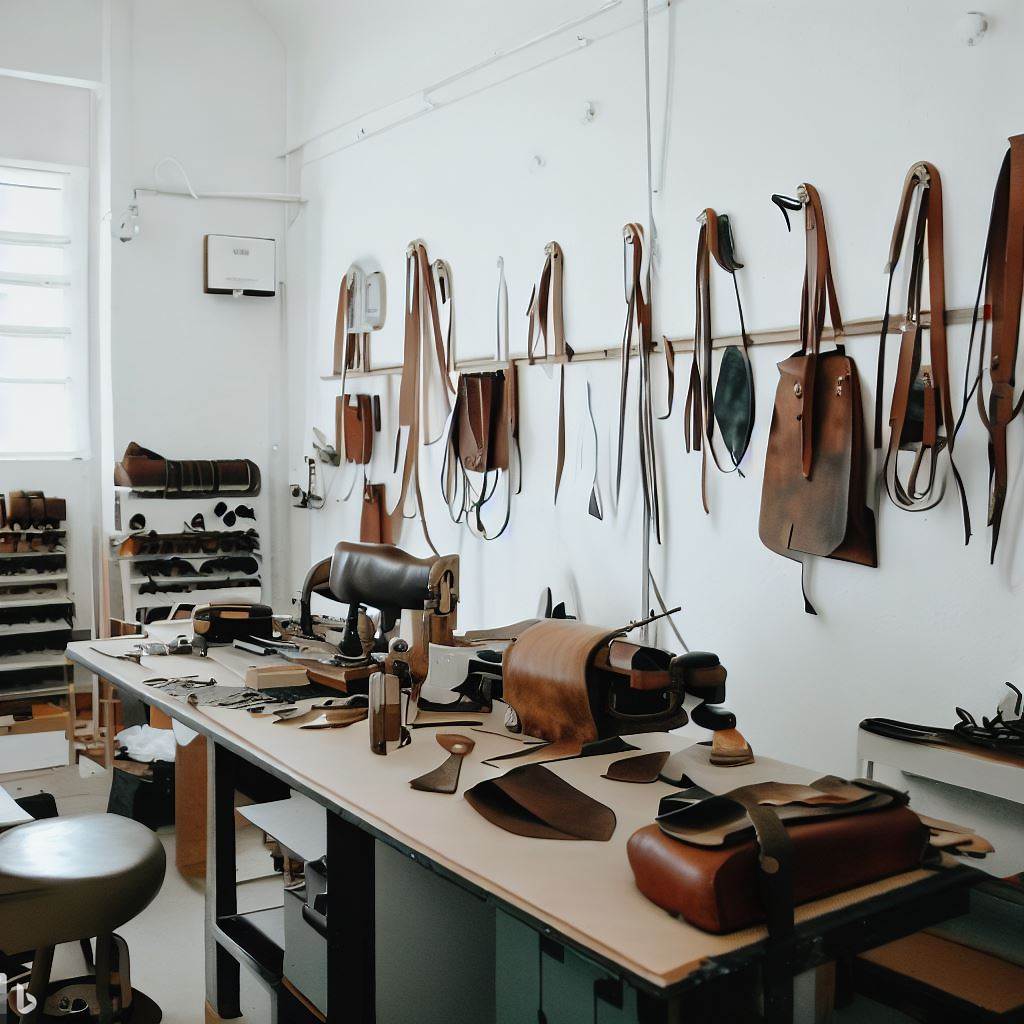Leatherworking Innovations: Embracing New Materials and Designs
Upcycled Leatherscraps as Artistic Material
Leatherworkers increasingly upcycle leftover scraps and remnants from other upholstery and clothing operations into creative new pieces. Materials once discarded gain renewed life.
Cutoffs from larger hides, excess punched ovals, and oddly shaped remnants get reimagined into jewelry, accessories, trinkets, gift cards, and journal covers. Even variably textured scraps mosaic together into sculptural wall art.
Through clever assembly and mosaic work, castoff material contributes to one-of-a-kind upcycled goods and lessens waste. The story and handworkmanship becomes the valued focus over pristine uniformity.
Unexpected Leathers From Exotic Species
Beyond staple cow and lamb, leatherworkers seek out rare and exotic materials like ostrich, bison, stingray, snakeskin, kudu, salmon, and alligator for novelty. Distinctive textures and markings set these leathers apart.
Sturdy bison leather etched with symbolism honors Indigenous communities. Iridescent fish leather makes aquatic-themed accessories shine. Metallic sequin-patterned stingray jazzes up handbags. They offer new creative possibilities and challenges through unique properties.
When sourced sustainably and ethically directly from managed livestock operations, exotic leathers allow artisans to craft novel personalized pieces unlike mass produced goods. Their rarity and qualities lend exotic allure.
Inventive Textures Through Material Mixing
Artisans interweave contrasting textiles and non-leathers like cotton, hemp, velvet, printed canvas, silk, and wool elements with leather for compelling combinations. Mixed textures enliven projects.
Leather pockets, straps, and handles get stitched skillfully onto cotton messenger bags. Chunky knit sweater swatches ruggedize minimal wallets. Felt, burlap, and mesh interplay with leather as cohesive laminated sheets for architects. Nature and machine fuse.
Blending divergent fabrics widens creative possibilities and utility. New concepts emerge from the marriage of unique material characteristics. Textural interplay makes leather more compelling.
Sustainable Leather Alternatives
Eco-mindful makers seek out leather alternatives like waxed canvas, cork, paper, and plant-based “vegan leather” for products not requiring animal material. Creativity thrives under constraints.
Walnut shells, rice paper, tree leaves, and coconut skins compress into malleable slabs emulating leather’s look. The canvases get hand tooled and painted using non-toxic inks. Final waxing enhances texture and sheen.
When sourcing sustainable options directly, purchasing power signals market demand for responsible materials that reduce waste and chemical pollution. Small steps steer industries toward earth-friendly progress.
High-Tech Digital Fabrication Approaches
Digital modeling and fabrication expand geometric possibilities with leather through computer-guided precision cutting, assembly, and tool path programming. Complexity unfolds.
Laser cutters etch artful tessellations and lace patterns unattainable by hand. CNC machines carve intricately three-dimensional reliefs guided by 3D scans. Robotic arms bestow otherworldly symmetry.
This fusion of computing power and hand finishing of digitally enhanced components allows master artisans to execute concepts impossible through analog means alone. Tradition and futurism merge.
Eyeshadow Leather and Unconventional Finishes
Whimsical artisans utilize nontraditional dyes and paints on leather like alcohol inks, nail polish, fabric dyes, colored resins and automotive paints for transformative effects unlike classic leatherwork. Playful experimentation opens new frontiers.
Dense saturated cosmetic pigments make leather resemble reptile scales. Frenzied abstract acrylic pours turn mundane wallets into conversation starters. Obsolete fun fur gets reincarnated as novelty leather fringe.
While natural dyes maintain revered historic ties, letting creativity roam freely with less permament finishes allows leather to become a more vibrant, adaptable, and surprising canvas for self-expression.
Reconstituted ‘Leather’ Using Natural and Synthetic Fibers
Through material science, many fabricators craft ‘reconstituted leather’ sheets made by binding shredded and woven natural/synthetic fibers with adhesives then applying polymer finishes. The realistic sheets expand creative options with consistent results, while using recycled content.
Microfiber and biofiber composites get embossed with leather-like grain patterns and stamped just like animal hides. Chrome tanning leaves the matieral supple. Bonded full grain leather trims finish raw edges for elevated quality.
For artisans requiring very large uniform canvas, reconstructed simulated leathers provide affordable sustainability. Hand finishing allows introducing real craftsmanship to printed foundations.
Unexpected Artistic Leather Applications
Innovative industrial designers utilize leather in unpredictable applications like fashioned leather speakers, stained glass, workboard surfaces, lampshades, room dividers, and modern furniture. Leather shapeshifts.
Sound waves vibrate drum-tight leather sheets in resonator speakers. Leather gets laminated between glass panes forming translucent partitions. Chairs get contoured entirely in quilted blue leather. Leather lampshades emit warm ambient glows.
Pushing material limits exposes leather’s underutilized artistic capacities. The organic strength, elegance, and ageability benefit products never before considered. Leather flows into new frontiers.
By embracing ethical emerging materials applied through both handwork and digital technology, leathercrafting continuously evolves to meet the demands of modern life and creativity. While honoring heritage practice, innovation insures venerable arts remain dynamic languages speaking to contemporary culture. The two currents flowing together carve rewarding new channels into the future.
